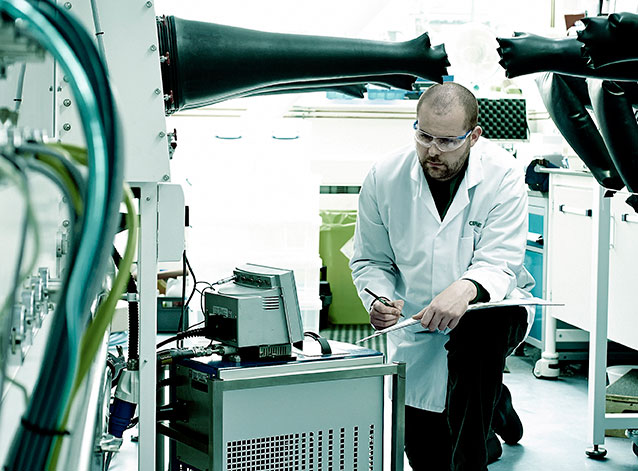Harnessing the Superpower of Data: Transforming Insights into Action
In today’s data-rich landscape, data isn’t just a resource – it’s a superpower that can transform businesses, and the laboratory setting is no exception.
Labs harnessing their data are streamlining their operations, enhancing decision making, and uncovering hidden opportunities for scientific innovation. In this article, we’ll explore how data can be a superpower for labs. We’ll review how services like asset utilization monitoring, environmental monitoring, and occupancy monitoring are not just tools; they are the keys to improving outcomes.

Unlocking Efficiency with Data Insights
Efficient resource management is vital for productivity and cost effectiveness. Understanding how these assets are used can be a game changer for Lab Managers and Lab Operations staff, enabling better resource allocation and preventative maintenance planning.
Asset utilization monitoring provides real-time analysis and tracking of a lab’s equipment.
Harnessing this data can reduce downtime, save costs, and streamline workflows. The key is in connecting the dots. By connecting a variety of industry leading data collection technologies, clients can measure equipment use, correlate service levels and cost of ownership with equipment breakdowns, decipher patterns and then benchmark the lab equipment data against a global database of anonymized metrics and standards. Is high equipment breakdown due to user training gaps, overuse, ineffective maintenance, or underlying performance issues? These actionable recommendations help clients optimize their operations and improve the reliability of science.
“ Imagine a scenario where one freezer experiences frequent temperature fluctuations due to frequent door openings, while another identical unit remains largely unused. Data-driven insights here suggest redistributing samples for optimal usage and lifespan. This advice, powered by data, can lead to substantial efficiency gains, reliable sample management, and cost savings.”
Mark Trueman, Global Technical Director, Full Spectrum Lab Services

Selecting the Right Monitoring Application
With the example of potential freezer failures, traditional monitoring systems based on temperature set point alarms are not predictive, nor do they tell you that the problem started months ago when repairs are most affordable. They report after the problem has already occurred. Using environmental monitoring systems that analyze the temperature, energy consumption, door activity of each freezer, combined with other power fluctuations that can indicate deeper issues with equipment, your operations can shift from ‘Fail-and-Fix’ to a ‘Predict-and-Prevent’ mode. Combining these field devices and data streams with world-class analytics, real time data coming from a freezer now delivers instant actionable intelligence to laboratory managers and researchers.
Lab managers can take this a step further by overlaying insights on scientist movement within the lab, which informs a more comprehensive view of the broader lab efficiency and effectiveness. This data-driven approach helps optimize laboratory space utilization, enhance safety protocols, and ensure compliance with occupancy limits.
The Key to Delivering Value with Lab Data
Data-driven transformations aren’t just about technology – they hinge on a skilled workforce that can understand, interpret, and present the data with a high degree of confidence. For the Full Spectrum Lab Services team, we focus on first validating the quality of the data, interpreting the anomalies found, and making data-driven recommendations. The ability to interpret and present data is more critical than ever, and we’re committed to arming our analytics team with strong data literacy skills.
The connection between data and lab operators extend to use of Mixed Reality head-mounted displays. While initially used for remote troubleshooting and immersive training, we are seeing teams pushing boundaries by exploring spatial anchoring. We’re creating an immersive environment where insights are seamlessly integrated into the physical world. Imagine technicians walking through a lab, observing live equipment performance data hovering in space over the assets, revolutionizing the way we interact with data. This approach makes data more actionable in the physical world, driving greater productivity, and reliability in the lab.
Linking Insights to Objectives
As you navigate the opportunities that a data-driven approach could offer, there are four key takeaways to consider:
- Define Objectives: Understand your goals. What do you aim to achieve with data insights? Without clear objectives, even the most sophisticated data can be directionless. Goals are usually a balancing act between responsiveness, lab operating cost efficiency, compliance, and scientific productivity.
- Change Management: Embrace a change management strategy. Engaging stakeholders and cultivating a culture of data-driven decision-making is paramount to success. The other key to change management is connecting disparate teams that have already taken a similar change journey with ones that are considering the change.
- Contextual Understanding: Data without context is hard to action. The ability to interpret data in its broader context can lead to smart, informed decisions. This is especially important in the lab where processes are often very bespoke and need to be considered with any recommendation for change.
- Holistic Approach: Insights need to be as holistic as possible. Data in isolation may not get to the root cause or true opportunity. Data needs to be tested with stakeholders for feedback
In the lab, data is a superpower that can drive efficiency, cost savings, safety, and compliance.
Full Spectrum Lab Services from CBRE is continually exploring best practices with lab stakeholder to develop more actionable insights. By embracing lab data technologies, analytics, and the skills to use these insights, labs can propel scientific discovery and innovate to new heights.
